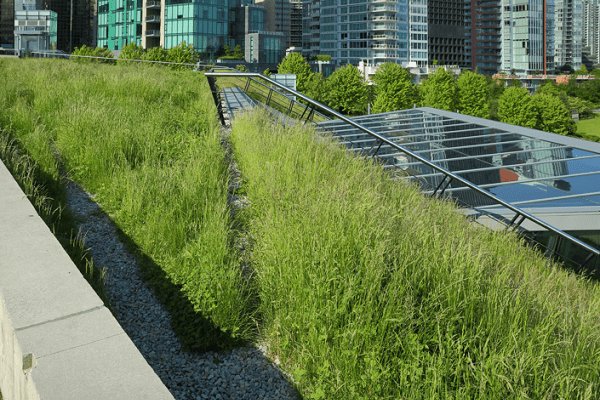
Eco-Friendly Heights: Green Roofs Transforming Commercial Buildings
Green roofs, once considered a niche concept, are gaining prominence as sustainable solutions in commercial building design. These environmentally friendly installations not only contribute to ecological well-being but also offer a range of benefits for businesses looking to create healthier and more energy-efficient workspaces.
Environmental Impact and Benefits
Green roofs, adorned with vegetation and plant life, significantly contribute to environmental well-being. They act as natural insulators, regulating temperature and reducing the urban heat island effect. Moreover, green roofs absorb rainwater, mitigating stormwater runoff and promoting biodiversity in urban landscapes.
Energy Efficiency and Cost Savings
One of the primary advantages of green roofs in commercial buildings is enhanced energy efficiency. The vegetation layer acts as a natural thermal insulator, reducing the need for excessive heating or cooling. This, in turn, leads to lower energy consumption and operational costs, making green roofs a sustainable and cost-effective choice for businesses.
Improving Air Quality and Employee Well-being
Green roofs play a vital role in improving air quality by trapping pollutants and releasing oxygen. The introduction of green spaces in commercial buildings contributes to a healthier indoor environment, positively impacting the well-being and productivity of employees. The connection with nature within the workplace can lead to reduced stress and increased job satisfaction.
Stormwater Management and Sustainable Practices
As urban areas face challenges with stormwater management, green roofs offer a sustainable solution. By absorbing and retaining rainwater, they reduce the strain on drainage systems and help prevent flooding. Incorporating green roofs into commercial buildings aligns with sustainable practices, demonstrating a commitment to environmental responsibility.
Architectural Aesthetics and Brand Image
Beyond the environmental and functional benefits, green roofs enhance the architectural aesthetics of commercial buildings. The visual appeal of lush, green spaces on rooftops adds a touch of natural beauty to urban landscapes. For businesses, this not only creates an inviting atmosphere but also contributes to a positive brand image associated with sustainability and eco-consciousness.
Ninth World Hub: Pioneering Green Roof Integration
Explore the transformative impact of green roofs at Ninth World Hub. As a pioneer in sustainable building practices, Ninth World Hub exemplifies the successful integration of green roofs in commercial spaces. Witness firsthand how these eco-friendly installations contribute to a vibrant and sustainable working environment.
Installation Considerations and Maintenance
While the benefits of green roofs are substantial, their installation requires careful consideration. Factors such as structural capacity, waterproofing, and plant selection must be evaluated to ensure successful implementation. Additionally, ongoing maintenance is essential to preserve the health and functionality of the green roof over time.
Regulatory Incentives and Certification
Many regions offer regulatory incentives for businesses incorporating green roofs into their commercial buildings. These incentives may include tax breaks, grants, or certification programs recognizing environmentally friendly practices. Businesses can leverage these opportunities to offset initial implementation costs and demonstrate commitment to sustainability.
Adapting to Climate Challenges
Green roofs contribute to climate resilience by absorbing excess rainfall and providing insulation. In the face of climate change, these installations become crucial elements in adapting commercial buildings to extreme weather events, helping to mitigate temperature fluctuations and support long-term environmental sustainability.
Future Trends in Sustainable Commercial Design
As the importance of sustainability grows, green roofs are expected to become a standard feature in commercial building design. The integration of nature into urban environments not only addresses ecological concerns but also aligns with the evolving expectations of businesses and consumers for responsible and environmentally conscious practices.
In conclusion, green roofs in commercial buildings represent a holistic approach to sustainable design. From environmental benefits to energy efficiency and employee well-being, these installations offer a multitude of advantages. As businesses embrace the shift towards eco-friendly practices, green roofs stand as iconic symbols of a commitment to a greener and more sustainable future. Explore the potential of green roofs and their transformative impact at Ninth World Hub.
